The true competitive advantage lies in data intelligence and the ability to segment and personalize the customer experience. To achieve exceptional ROAS (Return on Ad Spend) and foster lasting loyalty, it’s imperative to centralize your guest information and use it strategically. This isn’t just a recommendation; it’s the key for your hotel to not only be visible but also to be the top booking choice.
The Challenge of Fragmented Data in the Hotel Industry
Hotels, by their very nature, generate an enormous amount of data: bookings across different channels (direct web, OTAs, calls), in-hotel interactions (check-in, check-out, service usage), room preferences, payment histories, comments, interactions with marketing campaigns, etc. The problem is that this information often resides in separate silos:
- Property Management Systems (PMS): Manage daily operations, reservations, billing.
- Booking Engines: Handle direct bookings on your website.
- Point of Sale (POS) Systems: For restaurants, bars, spa.
- Digital Marketing Platforms: Google Ads, Meta Ads, email marketing platforms.
- Online Reputation Management Systems: Collect reviews and comments.
When this data isn’t connected, you lose a 360-degree view of your guests. You can’t personalize their offers, anticipate their needs, or optimize your advertising campaigns with the precision needed to skyrocket your ROAS. Fragmented data is essentially useless data.
Why Centralization and Segmentation Are Vital for Your Hotel
Data centralization and strategic segmentation are the engine of truly effective hotel marketing:
- Unified Guest View: Build complete profiles for each customer, including their stay history, preferences, Lifetime Value (LTV), and how they interacted with your marketing channels.
- Personalization at Scale: With centralized data, you can offer personalized experiences before, during, and after the stay. This ranges from a pre-stay email with personalized recommendations to reactivation offers that resonate with their past interests.
- ROAS Optimization: Segmentation allows you to target your advertising campaigns with surgical precision. Instead of spending on broad audiences, you invest in high-value segments, repeat customers, or those with high conversion potential, reducing your CPA (Cost Per Acquisition) and increasing the profitability of every dollar invested.
- Loyalty and Repeat Business: By better understanding your customers, you can design loyalty programs, personalized communications, and irresistible offers that encourage them to return again and again. Returning customers are the most profitable revenue source for any hotel.
- Strategic Decision-Making: Reliable, centralized data allows you to identify trends, predict demand, optimize pricing, and allocate resources more efficiently.
Key Tools for Centralizing Data and Segmenting Customers
To achieve this unified view and carry out effective segmentation, you’ll need a well-integrated ecosystem of tools.
1. The Property Management System (PMS) as the Operational Core
Your PMS is the backbone of your hotel’s operations. It’s where bookings, check-ins/outs, room assignments, requested services, and billing data are recorded.
- Key Functionalities: Reservation management, rate management, front office, back office, reporting.
- Vital Integration: A modern PMS should offer robust integrations with booking engines, channel managers, point-of-sale (POS) systems, and, crucially, with a CRM (Customer Relationship Management).
- Popular Examples: Opera PMS (Oracle Hospitality), Cloudbeds, Mews, Stayntouch, Protel.
- Importance for Segmentation: The PMS is the source of primary data on guest stay and transactional behavior.
2. The Customer Relationship Management (CRM) System as the Strategic Brain
The CRM is where data from different sources is unified to create a 360-degree view of each guest and is used for marketing and sales strategies.
Key Functionalities:
- Unified Guest Profiles: Gathers data from PMS, booking engine, web forms, email interactions, social media, and more.
- Interaction History: Records every touchpoint and communication.
- Advanced Segmentation: Allows you to create customer groups based on demographics, booking history, preferences, lifetime value (LTV), online behavior, etc.
- Marketing Automation: Enables the setup of automated workflows for welcome emails, reactivation offers, birthday greetings.
- Loyalty Program Management: For tracking points, rewards, and membership tiers.
Types of Hotel CRMs:
- General CRMs with Hotel Adaptations: Salesforce Sales Cloud, HubSpot (offer high flexibility and powerful automations).
- Hotel-Specific CRMs: Revinate, Cendyn, Guestware, which are pre-configured for the industry’s needs.
- Integration with Advertising: A good CRM can export audience lists (emails, user IDs) to be used on platforms like Google Ads (Customer Match) and Meta Ads (Custom Audiences), allowing for retargeting and lookalike audience creation.
3. Web Analytics Tools: Google Analytics 4 (GA4)
GA4 is your fundamental tool for understanding user behavior on your website and booking engine, and it’s key to accurately measuring ROAS.
- Behavioral Data Collection: Tracks page views, clicks, form interactions, booking initiations, and completed bookings.
- Conversion Measurement: Essential for knowing which campaigns are generating bookings. Ensure you configure purchase events with the dynamic booking value.
- Attribution Models: GA4 offers advanced attribution models, including the Data-Driven Model, which assigns credit to all touchpoints in the customer journey, providing a more precise ROAS.
- Integration: Integrates directly with Google Ads, Google Hotel Ads, and Looker Studio, allowing for a unified view of advertising performance.
4. Advertising Platforms: Google Ads and Meta Ads (Facebook/Instagram)
These are the tools where you’ll apply your segmentation to impact your ROAS.
Google Ads:
- Customer Match: Upload your hashed email lists from your CRM to create retargeting audiences for existing customers or to exclude those who have already booked.
- Affinity and In-Market Audiences: Combine them with your CRM data to find new high-value prospects.
- Target ROAS: Use this bidding strategy for Google Ads to automatically optimize your bids to achieve a desired ROAS, based on GA4 conversion data.
Meta Ads (Facebook & Instagram):
- Custom Audiences: Upload customer lists from your CRM for retargeting, reactivation, or to exclude current customers from certain campaigns.
- Lookalike Audiences: Create audiences based on your most valuable customers (extracted from the CRM) to find new users with similar profiles.
- Value Optimization: Meta Ads can optimize your campaigns for conversion value, if you pass the booking value data through the Meta Pixel.
5. Automated Email Marketing (EMA) Tools
While often integrated into hotel CRMs, they can also be standalone tools that connect to the CRM.
- Segmentation for Emails: Use CRM data to send highly segmented emails:
- Welcome emails after the first stay.
- Exclusive offers based on booking history.
- Post-stay satisfaction surveys.
- Reactivation emails for inactive guests.
- Welcome emails after the first stay.
- Examples: Mailchimp, ActiveCampaign, Constant Contact (while general, they can integrate well).
6. Online Reputation Management (ORM) Platforms
While they don’t centralize transactional data, they do centralize a crucial type of data: the voice of the customer.
- Monitoring and Response: Allow you to centralize and respond to reviews from Google My Business, TripAdvisor, OTAs, etc.
- Indirect Impact on ROAS: Positive reviews increase potential guest trust, which boosts your website’s conversion rates and, therefore, the ROAS of your paid campaigns, as more clicks convert into bookings.
- Examples: ReviewPro, TrustYou, RepUp.
Implementing a Cohesive Data Ecosystem
For these tools to work together and boost your ROAS, consider these steps:
- Current Data Audit: Identify where all your guest information currently resides and how clean it is.
- Tool Selection: Choose a PMS and CRM that integrate well with each other and with your key marketing platforms. Prioritize integration capabilities.
- Implementation and Connectivity: Work with your software providers and, if necessary, integration experts, to ensure a bidirectional data flow between your systems.
- Segment Definition: Based on your business goals, define key customer segments (e.g., VIP guests, families, business travelers, low-season only bookers).
- Personalization Strategies: Design how you will use each segment in your marketing campaigns (what messages, what offers, on which channels).
- Measurement and Attribution: Correctly configure Google Analytics 4 and the advertising platform pixels to measure conversions and the value of each booking. Use data-driven attribution models to understand the true impact of each channel.
- Continuous Analysis and Optimization: Centralized data will allow you to generate detailed reports and dashboards (using tools like Looker Studio) to monitor performance, identify opportunities, and continuously optimize your strategies.
Centralizing your data and mastering customer segmentation is not a luxury; it’s a strategic necessity for any hotel looking to maximize its ROAS and build a loyal customer base. By investing in the right tools and an integrated approach, you’ll transform raw data into actionable insights, allowing your hotel to not only compete but lead the market. The era of mass marketing is over; the era of intelligent, data-driven personalization has arrived for the hotel sector.
Contact us at Digisap, and let’s design together an SEO and digital marketing strategy so your hotel is the first choice, and guests book with you, not the competition.
Click here to schedule your free consultation and take your hotel to the next level





